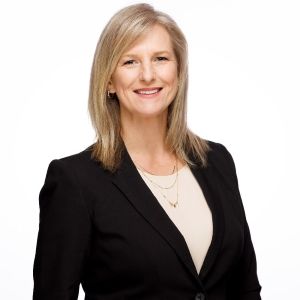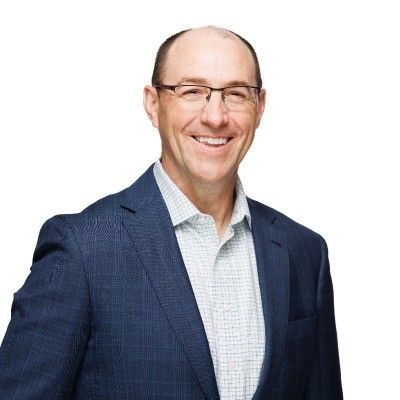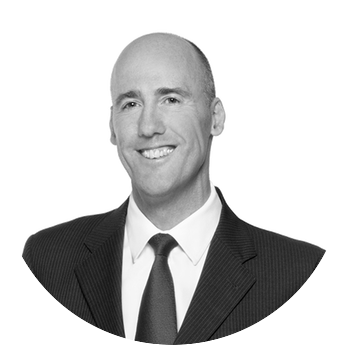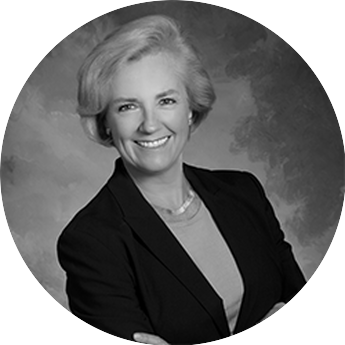HIMSS Areas of Expertise
Explore our areas of expertise and thought leadership. HIMSS subject matter experts have an unparalleled depth and breadth of knowledge. Please contact our communications team for more information and to schedule interviews.

-

Vice President, Informatics
Christina Caraballo
Areas of Expertise
- Interoperability, Standards & Health Ecosystems; Consumer Access & Engagement; Health IT Policy & Strategy; Local to Global Innovation & Culture Change; Internal & External Leadership
Recent Press Coverage
Committees/Panel/Association Participation
- Support for all Informatics Committees/Communities
Areas of Interest
- Interoperability & ecosystem expansion, public health, health equity, international markets Support for all Informatics Committees/Communities
Biography
Christina is a force of positive energy and is known as a thought leader who solves problems. She is transforming health care by synergizing her passions for policy, innovation, interoperability, consumer engagement, access to information, and the adoption of health IT. Christina’s mission is to transform healthcare through the adoption of health information technology (health IT), make a positive impact in the world and improve communities at the local, national, and international levels. With a deep understanding of the real-world challenges the industry must overcome to implement a robust health IT infrastructure that serves all stakeholders. Christina is an integral part of HIMSS initiatives focused on advancing the adaption and use of standards-based health IT and expanding the health and healthcare ecosystems with a focus on access to information, vulnerable populations, and communities. As a recognized leader in the health IT sector, Christina is an active participate in and advocates for industry initiatives that strive to increase the adoption of health IT, interoperability, and patient engagement.
-

Director, Government Relations
Eli Fleet
Areas of Expertise
- Federal regulatory affairs
- Department of Health and Human Services (HHS) operations
- Healthcare business and strategy
Recent Press Coverage
Areas of Interest
- U.S. government and policy
- Cybersecurity policy
- Electronic health record vendors
- U.S. healthcare payment structures
Points of View
I look at things from a policy perspective and through a political and business lens. Technology is a resource that can help us do business more efficiently, whether it’s finance or healthcare.
Information and technology is and will continue to be the backbone of healthcare, from the innovation and development of global technology to the decision making of each individual patient, from chronic care to medical research.
We want to make sure companies, entrepreneurs and doctors can find ways to innovate, to take care of their patients in a safe and secure environment, and they’re not feeling limited by policy.
I’m familiar with the intricacies of HHS, and I’m engaged with people at many different parts of the department, as well as work taking place on a global scale.
-

Senior Director, Public Policy
Jonathan French
Areas of Expertise
- Improving care quality and outcomes through the use of information and technology
- Quality measurement and related public policy
- Rural and underserved primary care
Recent Press Coverage
- Australia's St. Stephen's Hospital earns HIMSS Davies Award for device integration, patient safety
- UCLA Health wins HIMSS Davies for innovations in depression treatment
- The Front Line: Thoughtfully Leveraging Technology in a Pandemic
- Making Merit-Based Payment Meaningful: The Next Step in Healthcare Quality Measurement
Committees/Panel/Association Participation
- HIMSS Quality and Patient Safety Task Force
Areas of Interest
- Patient safety
- Decision support and public policy
- Value based care
- CMS Inpatient Quality Reporting Program and Quality Payment Program
- Healthcare in rural and underserved communities
Points of View
Through my work with the Davies Awards, I have observed a multitude of organizations, and I’m familiar with best practices for aligning technology with organizational culture to drive improved outcomes. I have insight into what consistent changes seem to work in different organizations and which trends are valuable. As a patient, as a caregiver, and as someone who has been around HIMSS since 2006, I've seen evolution in many areas of this industry.
With our value-based care models, we are focusing on quality to drive better behavior. In the world of quality measurement, you take information from a patient's record, and you determine if the proper care was received for the right patient at the right time. This work is often process driven, but we’re starting to transition to be more outcome driven.
Navigating that field touches on operational and clinical practice and goes into the interoperability world and the policy world. With the HIMSS Quality and Patient Safety Task Force, we try to share all of the considerations policymakers need to make sure the data collected ultimately results in improved outcomes for patients. The data must be a single source of truth. We can make data more effective and more reliable. I'm a big believer in accountability for evidenced-based care.
Technology is a tool. It can always get better, and there will always be innovation and evolution. Change ultimately comes down to an organization’s culture. As technology is developed, there will always be standards to meet, the medicine may just be much more individualized. But that accountability will never go away. That accountability piece is most important, and the culture within an organization should be constantly looking to improve.
Some of the organizations that are most impactful are not necessarily the biggest systems but organizations where there is accountability and where individuals or teams take on quality improvement projects. The expectation is that every healthcare site in the country can be a learning health system. If the small organizations do amazing things from a cultural perspective with just the baseline technology, when you can add bells and whistles, those organizations can really move the needle.
-

Director, Government Relations
David Gray
Areas of Expertise
- Congressional affairs
- Connected health policy
- Healthcare transformation
Recent Press Coverage
- Promoting vaccine equity for all, a Q1 US policy update
- HIMSS outlines political health it priorities and progress
- The US needs a patient identification strategy yesterday
Areas of Interest
- U.S. government and policy
- The intersection of politics and policy in health
- Telehealth, remote monitoring and digital health from a patient safety and health outcomes perspective
- Cost reduction, cost savings
- Policies that govern Medicare, HSS regulations and how telehealth can be applied
Points of View
I navigate the policy and politics of D.C. as it plays out on Capitol Hill. I look at how policy, healthcare and technology intersect holistically to serve patients. Technology, when used correctly, makes people’s lives easier. Connected health is working to make people healthier, to increase their access to care, to give patients the information, knowledge and tools to make better decisions.
We’ve been hoping each year since 2015 that we would see “the year of telehealth,” a period when the barriers built to prevent telehealth from being abused or overused would change to allow technology to help keep people healthier. Since the COVID-19 pandemic was declared, everything we thought we knew about how telehealth was being used has completely shifted. The rules that governed health technology before the pandemic don’t really apply anymore.
There’s still concern around the potential for fraud, abuse and overutilization, but telehealth has been embraced. Professionals, systems and the healthcare community at large have invested time and resources in technology, training and education for healthcare workers. There’s no going back.
The Centers for Medicare & Medicaid Services (CMS) has embraced a number of changes in its annual fee schedules. In Congress, the restrictions require congressional action to undo. There still is a disagreement about whether to make changes all at once or to disassemble the barriers brick by brick. But we have reached a tipping point, and I don’t think anyone can predict what unraveling of the barriers will look like.
-

Senior Director, Informatics Strategy
Rob Havasy
Areas of Expertise
- Connected health
- Telemedicine
- EHR integrations
Recent Press Coverage
- The House Call of the Future Is Virtual
- Leveraging technology to achieve health equity
- 3rd Annual Virtual Panel Discussion on Telehealth
Committees/Panel/Association Participation
- Board member, Xcertia
- Connected Health Community
- PCHA US Policy Workgroup
- EU Policy Workgroup
- Aging and Technology Workgroup
- Continua Technical Workgroups
Areas of Interest
- Telemedicine, EHR deployments, cybersecurity
- Hospital IT operations, the role of a CIO, the role of different people in an IT organization, the governance structure of IT projects, etc.
- The use of connected technologies to deliver care in non-traditional care settings; how to use consumer devices to create data from non-traditional sources and merge that data into the healthcare system for decision-making
- Consumerized, patient-centered and connected health technologies
- Among the earliest people with on-the-ground experience of integrating these devices such as home blood pressure monitoring, home diabetes or glucose monitoring, home weight monitoring after bariatric surgery, home heart failure monitoring
Points of View
COVID-19 has forced us to consumerize two experiences that were completely opaque for most people. In the span of a couple of weeks we took two of the most critical functions of society and forced them onto the Internet: education of our children and the provision of healthcare if you were not a COVID patient.
People are demanding more of their routine healthcare be easier to access using technologies. So we’re going to see that have a profound effect on hospitals.
Telemedicine is better for clinician burnout, for people and for convenience. Healthcare systems will be stronger the changes prompted by this pandemic, the care will be better, the outcomes will be better.
If we time it right, we can deliver more care to more people for a time, addressing the silver tsunami of retiring Baby Boomers that is requiring expanded healthcare capacity. If policymakers could phase in telemedicine to coincide with that wave, we could come out to the other side of the pandemic with much less pain.
The challenges we face post-COVID-19, as health systems try to implement consumerized technology, need to be solved by appropriate healthcare policy, appropriate economic policies, appropriate business model changes and appropriate societal-level adjustments of how we fund healthcare. Almost none of it is a technology problem. If we can unite the correct non-technology forces, we can implement a wholesale revolution of the way we deliver care that will benefit everyone on the other side of this pandemic.
Healthcare is a system, and it needs a systems-thinking approach. Let’s think about different areas that aren’t just telemedicine. How does telemedicine fit into the bigger picture? We all think this is a great day for technology. But nothing happens in isolation.
-

Senior Principal, Cybersecurity & Privacy
Lee Kim
Areas of Expertise
- Cybersecurity and privacy
- Critical infrastructure
Recent Press Coverage
- 37,800 people sent privacy breach notifications linked to N.L. cyberattack
- Hospitals on high alert for cyberattacks
- Could Russian Hackers Cripple U.S. Health Care Systems?
Committees/Panel/Association Participation
- Director, InfraGard Northern Capital Region
- Founding Member, Cyber Health Working Group
- Vice Chair, Policy Committee, American Bar Association Health Law Section
- Past Team Leader & Champion, US Department of Homeland Security Analytic Exchange Program
- National Visiting Committee member, National Cybersecurity Training and Education Center (appointed by National Science Foundation as healthcare representative)
- Advisory Board Member, SANS Securing the Human Healthcare
- US DHS National Cyber Incident Response Plan Working Group (Healthcare Representative)
- NIST Baldrige Cybersecurity Excellence Builder Workgroup member
- IANS faculty member
- Past Vice Chair, eHealth Privacy and Security Interest Group, eSource, and Emerging Issues in Healthcare Law, American Bar Association
- Past member, US Government Advisory Council Executive Writers Bureau - (ISC)2
Areas of Interest
- Cybersecurity and information privacy (certified)
- Cybersecurity surveys for industry
- Critical infrastructure security
- Cybersecurity supply chain management
Points of View
I have a saying: protect the data, protect the patient. We have to view it that way. We rely on the safe functioning of technology. That technology runs on its data.
I enjoy learning new things and accepting new challenges. There is no such thing as “too much information.” I like to analyze things and learn how they work. But my two favorite things are developing insights and tackling the toughest challenges.
From a very early age, though, healthcare has always been very personal. I grew up within the walls of hospital systems. I saw with my own eyes that life can be very fragile. And I feel that we need to help those who need us the most.
Protecting patients’ data is incredibly important and so is taking care of their lives. We need to understand, though, that taking care of patients’ data involves far more than rendering excellent patient care. We must also take care of the technology infrastructure and invest in its health and well-being.
In today’s digital age, healthcare delivery cannot happen without the efficient cooperation of the technical parts. And the technology can only run correctly by implementing best practices and standards relevant to the operations, security and defense.
Effective cybersecurity defense can be achieved through information sharing of cyber threat indicators, mitigations and associated best practices. In other words, it pays to be situationally aware in an ever-changing environment of good versus evil.
-

Senior Director, Clinical Informatics
Tammy Kwiatkoski
Areas of Expertise
- Clinical Informatics
- Clinician, Physician and Nursing Informatics
- Enterprise Imaging
- Health Technology Management (Clinical Engineers)
- Pharmacy Informatics
Recent Press Coverage
- Nursing Informaticists Are the Backbone of Technology-Driven Care
- Why Informatics Leaders Are Key to Reducing IT-Caused Clinician Burnout
- Why All Healthcare Systems Should Hire a Clinical Informaticist
Areas of Interest
- Annual HIMSS Nursing Informatics Workforce Survey
- Clinician burnout and physician burden
- Informaticists and user-centered design
Points of View
What’s more important now than ever for health IT greater interoperability, better data that is usable in clinical decision support, resulting in better patient care and the increased attention to social determinants of health.
When the IT staff was removed from hospitals under the pandemic, they relied on the informatics nurses because they are most closely capable of doing the work that the IT staff needed. It’s incredibly important to note the dual role that the nurses and the informatics nurses have.
Nurses are going to need more training because they spend the most time talking to the patients and getting an initial assessment about whether that patient is at risk. It’s important for nurses to have more training with telehealth experience.
Clinicians are facing a lot of unknowns, unanswered questions, and even greater unknown solutions with social determinants of health. We have extraordinary social disparities. My groups are trying to come up with solutions that are not one-size-fits-all, but will find a way to touch all.
There are a couple of key takeaways from this year’s Nursing Informatics Workforce Survey. Now, nursing informatics is better understood as a profession. It’s growing as a field, but also it’s growing as a specialty in education.
-

Senior Vice President & Head of Government Relations
Tom Leary
Tom Leary is senior vice president & head of government relations at HIMSS. In this role, Leary leads the organization’s digital health policy development work and strategic engagements with government and membership. He guides a team that provides legislative and regulatory analysis and practical guidance on health information and technology policy development. Through policy analysis and outreach to establish support, he leads priority engagements and strategies to achieve the HIMSS vision: to realize the full health potential of every human, everywhere.
Leary also serves as the executive director of the HIMSS Foundation. As the philanthropic arm of HIMSS, the foundation enriches public discourse on public policy and helps advance clinician informatics and data science education through granting academic scholarships and other opportunities. The foundation fosters partnerships to advance access and inclusion in the healthcare community.
Leary’s tenure at HIMSS began in 2003 as director of federal affairs, working with a small team of HIMSS staff to launch the government relations team. Later he was promoted to senior director, federal affairs—leading the team’s engagement with U.S. federal government on policy topics spanning everything from meaningful use to EHR modernization at the Departments of Defense and Veterans Affairs (DoD).
Prior to HIMSS, Leary was a division manager for SAIC’s TRICARE division, where he was engaged in the coordination of healthcare administrative outsourcing solutions for the Military Health System (MHS). His government experience includes time on Capitol Hill working as an LA for Rep. Les Aspin (D-WI) before heading to the Pentagon with the Aspin Team as a Clinton Administration political appointee.
Leary’s previous roles at DoD included staff assistant and special assistant for healthcare policy positions in the Office of the Secretary of Defense Legislative Affairs—followed by a shift to focus exclusively on federal healthcare policy as the Special Assistant to the Assistant Secretary for Health Affairs. As part of the senior management team, he worked to address important issues like medical readiness and peacetime healthcare delivery for military.
For professional enrichment, Leary teaches an online course on medical informatics and decision management for The George Washington University’s Master of Health Administration program. He also served as the treasurer of Falls Church High School’s Parent Teacher Student Association.Leary earned his master’s degree in legislative affairs from The George Washington University. He also earned a bachelor’s degree in history and political science from Rutgers University, He is a Certified Association Executive (CAE) through the American Society of Association Executives (ASAE), and has completed the Georgetown University Executive Leadership Certificate program.
Tom is a proud member of the Leary Bunch from Wanaque, NJ. He lives in Falls Church, VA with his awesome educator wife, Day, and teenage sons, Jackson Thomas and Marcus Paul, who are his current and future heroes!
-

Chief Products Officer
Reid Oakes
Reid Oakes is the Chief Products Officer at HIMSS. a global advisor and thought leader supporting the transformation of the health ecosystem through information and technology. In this role, he is responsible for industry alignment, product strategy, and go-to-market for the HIMSS product and services portfolio. These products include thought leadership and innovative solutions that assess, measure and guide organizations on their path to digital maturity, research that reveals insights and evidence about how digital maturity helps achieve better health outcomes, and professional development solutions to train the current and next generation of health leaders to advance digital health maturity.
Oakes was previously Executive Vice President, Analytics for HIMSS. Before joining HIMSS, he served as the Global Head and General Manager for Health Industries at HP Inc., where he focused on innovation and strategic solution engineering for the healthcare payer, provider and health sciences industries. Prior to HP, he held progressive roles with Oracle, Novell and consulting organizations. He is also a proud U.S. Air Force veteran.
Oakes brings more than 20 years of experience in delivering IT solutions for healthcare based on a strong technical foundation, strategic growth mindset and passionate focus on making a difference in the global healthcare markets. He is a recognized industry leader, having served in leadership capacities across standard-setting organizations, industry consortiums, national policy and numerous geography level health collaborations. He served on the boards of the Personal Connected Health Alliance (PCHA), and Continua Health Alliance—focusing on the adoption of personalized digital health technologies.
-

Vice President, Analytics & Global Advisory Lead
Andrew Pearce
Areas of Expertise
- Digital transformation and innovation
- Health system performance
- Digital health strategy
- Return on investment
Recent Press Coverage
- I am constantly providing input to and quotes for HIMSS media releases and case studies in APAC. To include past references and those in the future, please liaise with Thiru Gunasegaran (MR), APAC editor, see thiru.gunasegaran@himss.org
- Non-HIMSS coverage and publications recently includes
Committees/Panel/Association Participation
- I am on and chair a number of HIMSS committees but none externally
Areas of Interest
- Digital health transformation, structures and maturity in health systems
- National and jurisdiction-wide digital health transformation
- Health system outcomes including optimising return on investment linked to digital maturity
Points of View
Do you have any cornerstone beliefs that inform the way you approach/think about our relationship to healthcare?
Healthcare is one sector that prides itself on being driven by both science and evidence. Through the COVID-19 pandemic reinforced for the wider population globally this needs for research and evidence to not only inform the way ahead but also progress made. This applies equally to digital health transformation. Organisations need research-based insights and guidance to optimise their digital health transformation through the power of measurement and strategy. This is what HIMSS does. As the lead for analytics and advisory in APAC I am privileged to work with government, providers, vendors and payers to guide their digital health transformation every day to achieve our vision of realising the full health potential of every human, everywhere.
In a big picture sense, what are some of your expectations for the future of healthcare and information/technology?With the global pandemic, we have seen a significant shift in healthcare with regards to how it has needed to respond to aging populations with complex health needs, manage equity of access, workforce sustainability, technological advances not always delivering on promises and operating in an environment of disruption and uncertainty. Some examples include limited adoption of technologies at scale, escalating cyber security risks since the pandemic, severe workforce shortages in digital work environments that are not well established, and the sector promoting programs (e.g. World’s Best Smart Hospitals) that focus on the technology adopted rather than what those technologies enable health systems to achieve.
To address these challenges, we need to build together a digital health ecosystem. This is an ecosystem that connects clinicians and provider teams with people, enabling them to manage their health and wellness using digital tools in a secure and private environment whenever and wherever care is needed. It is an ecosystem where operational and care delivery processes are outcomes-driven, informed by data and real-world evidence to achieve exceptional quality, safety and performance that is sustainable.
-

Digital Health Strategist
Natasha Ramontal
Areas of Expertise
- Community health and population health
- Organizational development and strategy
- EMR/EHR implementation
- Change management
- Person-enabled care/patient-centered care
- Health equity
Recent Press Coverage
- Perspectives on community-based care: How to gauge success?
- Natasha Ramontal on HIT Like a Girl podcast
Committees/Panel/Association Participation
- American Nurses Association
- American Nursing Informatics Association
- American College of Healthcare Executives
Areas of Interest
- Digital health transformation
- Digital strategy
- Clinical outcomes
Points of View
I’m a second-career nurse, and my first career was in international development and international relations. I was involved with global non-profit organizations, governments and community-based organizations, helping them work together to improve economic and social conditions in a number of countries.
I decided to pivot my career to nursing, so I went to nursing school and worked in an emergency department, which I really enjoyed. From there, I wanted to affect people’s lives in a broader way. I was a case manager within a hospital, a case manager outside of a hospital, I taught nurses, I was a home health nurse, and then I made my way to the healthcare information and technology space. I volunteered to be a super user when hospital was transitioning from one EMR to another, and later I was a super user again as another hospital moved from paper to an EMR. I became a consultant, and later I was a clinical systems manager at a large physician group catering to multiple specialties.
My current role as a digital health strategist at HIMSS has been a perfect fit for me. I’m a healthcare advocate, and I believe you need to have data to make informed decisions. I pride myself on basing my critical thinking skills on evidence-based practices and frameworks.
The pandemic has dramatically shifted how people think about healthcare, information and technology. Rates of digital health transformation dramatically increased in terms of shifting to this new world of telehealth and virtual health. They will continue to advance, and healthcare needs to keep up with not only the pace of change, but the pace of adaptation.
-

Director, Government Relations
Valerie Rogers
Areas of Expertise
- Public policy
- Cross-sector data exchange
- Public health and population health
Recent Press Coverage
- The public health infrastructure debacle, revisited
- HIMSS Report Calls for $36.7 Billion Public Health Investment
- PopHealth Week featuring Valerie Rogers
Areas of Interest
- U.S. government and policy
- Social determinents of health
- Smart cities and communities
Points of View
We are thinking uniquely about the transformative nature of telehealth and telemedicine, and what that can do not only for basic healthcare needs, but its potential when combined with Artificial Intelligence, innovation and the internet of things.
Globally, we’re headed toward a fusion of interoperability across the spectrum of care. There are opportunities in using smart solutions, particularly in healthcare and mobilizing general populations.
One of the major barriers will be consumer health issues is around privacy and security and how personal data is used. The level of authority that you or I as individuals have about how our data is used, where our data is used, and even if we can benefit somehow from the use of our data, is part of the conversations we’re having.
Long term, the healthcare ecosystem can’t keep making plans in silos. We have to consider that there are other crises that can happen on top of an infectious disease crisis, such as hurricanes, wildfires, man-made threats to health and wellbeing. We have to make sure budgets and resources and partnerships reflect what we’re seeing happening now and what could be coming down the line in the future.
-

Chief Scientific Research Officer
Anne Snowdon
Areas of Expertise
- Digital transformation and innovation
- Health system performance
- National and global health system outcomes research
Recent Press Coverage
- Healthcare's future is proactive and preventive
- HIMSS Evolves EMRAM to a More Outcomes-Driven Approach
- As vaccine rollout looms, so do big questions around supply chains
Areas of Interest
- Digital health transformation, structures and maturity in health systems
- Person enabled care delivery systems
- Health system outcomes
- Health supply chain
Points of View
I am a clinician by training, and I've spent many years and decades in clinical settings. I lead and conduct national-level studies in my country, Canada, and also global and multinational studies primarily focused on digital capacity, structures and maturity in health systems from the perspective of how digital transformation contributes to health system performance; how it engages with populations, communities and citizens directly and meaningfully; and when that type of digitally enabled care happens, what outcomes can be achieved. As a full professor, I'm also an educator. I spend time with students, educating, supporting and teaching the next generation of health system leaders.
I look at the individual personalized models of care delivery that are digitally enabled as well as population health, focusing on the health challenges, priorities, needs and values of different populations and where digitally enabled care delivery achieves value and impact for unique population segments. I also focus on digital transformation and innovation more broadly; how health systems innovate, how they advance digital tools, technologies and infrastructure, how they scale them, and what measurement frameworks they use to understand the value of those innovations and more specifically digital tools and technologies and platforms.
I measure what matters and create evidence of impact and value. I engage with key stakeholders in health system environments, including industry innovators, entrepreneurs, startup companies, clinicians, clinician leaders and their respective associations and health system leaders from that operational perspective on government policymakers. All of those people are critical to have at the table to contribute and inform transformation and innovation at scale that focuses on digital transformation.
We talk a lot about value in healthcare, but how one defines value determines how it's measured and whether it's meaningful. How is value defined from the perspective of health system leaders, clinicians, families, patients or bottom-line operations? We have a multi-dimensional set of outcomes. Because the complexity of health systems is so high, you have to examine key concepts in those health systems from the many dimensions that are relevant. That's one of the difficult parts about working in healthcare.
It's exceptionally clear to me that technology has far outdistanced a health system's ability to adopt it and use it to create value. For me, transformation has everything to do with a health system’s capacity and vision to meaningfully adopt the tools, the technologies that enable the care models, the care delivery processes and the ways to connect to every global citizen to advance health and wellness.
We'll be focused on the global health system’s agility to transform into much more resilient, sustainable systems. We depend on leadership capacity, ability, vision and risk-taking to make sure we have a future health system.
HIMSS is working to bring empirical knowledge and evidence of value and impact of digital maturity, measured by HIMSS maturity models and the DHI. Evidence of the impact of digital health in advancing population health will guide HIMSS members and health systems on their digital transformation journey. We are an evidence-driven sector, and evidence is important because the success of our health system is all about protecting people's lives.